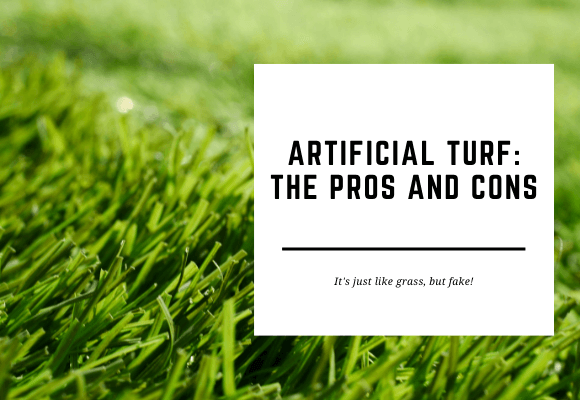
Artificial Turf: The Pros and Cons
Whether you’re looking to buy artificial grass for your home, business or sporting association, it’s important that you consider the pros and cons before making a purchase. Artificial grass is essentially a plastic lawn, with the turf attached to a mat and the fibres made of polyethene and lubricated with silicone. It also has an in-fill base of polypropylene or rubber granules (which are made from recycled car tyres) and sand.
Here are the pros and cons of artificial grass according to various factors:
Pros
1) Aesthetics
- It offers a bright green lawn throughout the year.
- It’s colourfast and looks like real grass.
2) Water usage
- It uses less water than real grass.
- Restrictions on water usage won’t affect artificial grass.
3) Maintenance and durability
- It’s low maintenance because it doesn’t need watering, fertilising or mowing.
- It creates less dust and doesn’t produce mud or rocks.
- It doesn’t wear out and can simulate the natural resilience of real grass.
- It increases playability, allowing broader access or more practice space for sports organisations, which in turn eliminates rain/mud problems for games and practices.
- Having no uneven playing surface, potholes, and slips in the mud means fewer injuries.
- If maintained properly, it can last for 7-10 years.
4) Costs
- You can save money on water.
- You don’t have to buy fertiliser, pesticides, lawn mower and lawn mower fuel.
- It costs less than paving and other artificial coverings.
5) Environmental impact
- You get to conserve water.
- You can minimise pollution from water run-off that carries chemicals like lead into drains.
- You don’t have to use pesticides or petrol-driven lawnmowers that emit carbon emissions.
- It uses recycled materials.
- It’s permeable, with holes in the backing that allow water to flow through the ground, which helps prevent flooding.
6) Special circumstances
- You can use it in a dog kennel (your dog can’t dig it up, it’s easy to clean and keep sterile, and there’ll be no muddy paws).
- It can also be used by the swimming pool (there’ll be no muddy areas to carry dust and dirt into the water and no ruts from outdoor lounges).
- You can use it for your roof if it’s not strong enough to support natural turf, and you don’t have to worry about grass clippings.
- It can also be used at a marquee event where a lot of people will be attending.
Cons
1) Aesthetics
- It’s still made of plastic, so it doesn’t have the aesthetic feel, smell or dynamic interaction of real grass.
- During its lifetime, it could end up with matting and gashes, affecting the look of the grass.
2) Maintenance and durability
- Sweeping off leaves and other debris from the surface has to be done on a weekly basis, or else they’ll rot and prevent drainage, causing moss and algae to grow.
- If blood, sweat, skin cells and other materials aren’t washed and cleaned off, they can cause bacterial growth in the turf. Bacteria such as staphylococci can survive on polyethene plastic for 90 days.
- You need to vacuum, wash, sanitise and disinfect it periodically, as well as remove stains and weeds.
- You have to maintain, dispose of and replace it each decade.
3) Costs
- A high-quality artificial lawn that is suited to your area’s conditions, soft, manufactured with an un-deteriorating hybrid emulsion backing, lead-free, and stain-resistant can be expensive.
- It has a higher installation and lifecycle cost than real grass.
4) Environmental impact
- A lot of energy is used when manufacturing artificial grass.
- It’s a petrochemical product that produces carbon emissions throughout its lifetime.
- It doesn’t offer organic biodiversity or filter carbon dioxide from the air.
- Its underlays may be difficult to recycle.
- It heats up faster and retains more heat in summer, which can make it too hot to play on. If the air temperature is 36°C, the turf’s surface temperature could rise to 48°C or more.
- It kills living organisms in the subsoil, which makes it impossible for natural grass to grow back. Therefore, you can only replace it with another artificial turf.
- At the end of its lifespan, it ends up in landfills and takes a long time to break down.
5) Health issues
- Older artificial turf made from nylon/polyethene fibres and those made of crumb/shredded rubber may contain lead, zinc, and other toxic chemicals that can escape into the air or leach into the water. This can pose serious health problems, as well as contaminate drinking water.
- During sports, athletes can get turf burns, or open skin lesions, that put them at risk of getting methicillin-resistant staphylococcus aureus (MRSA) infection.
- Breathing in dust from ground-up recycled tyres can worsen breathing problems for asthmatics.
By considering the pros and cons of artificial grass, you’ll be able to make informed choices about what’s better for your needs and lifestyle.
10 years ago
Comments

